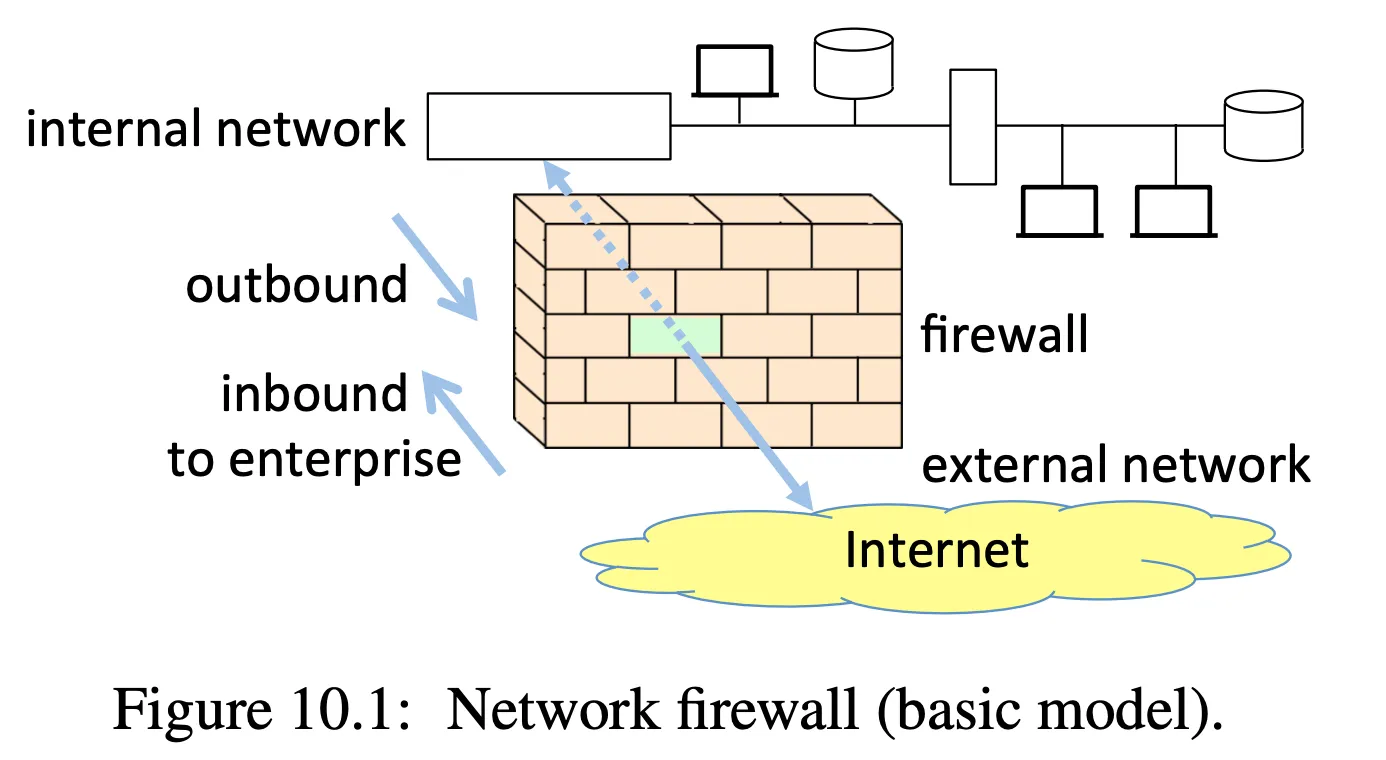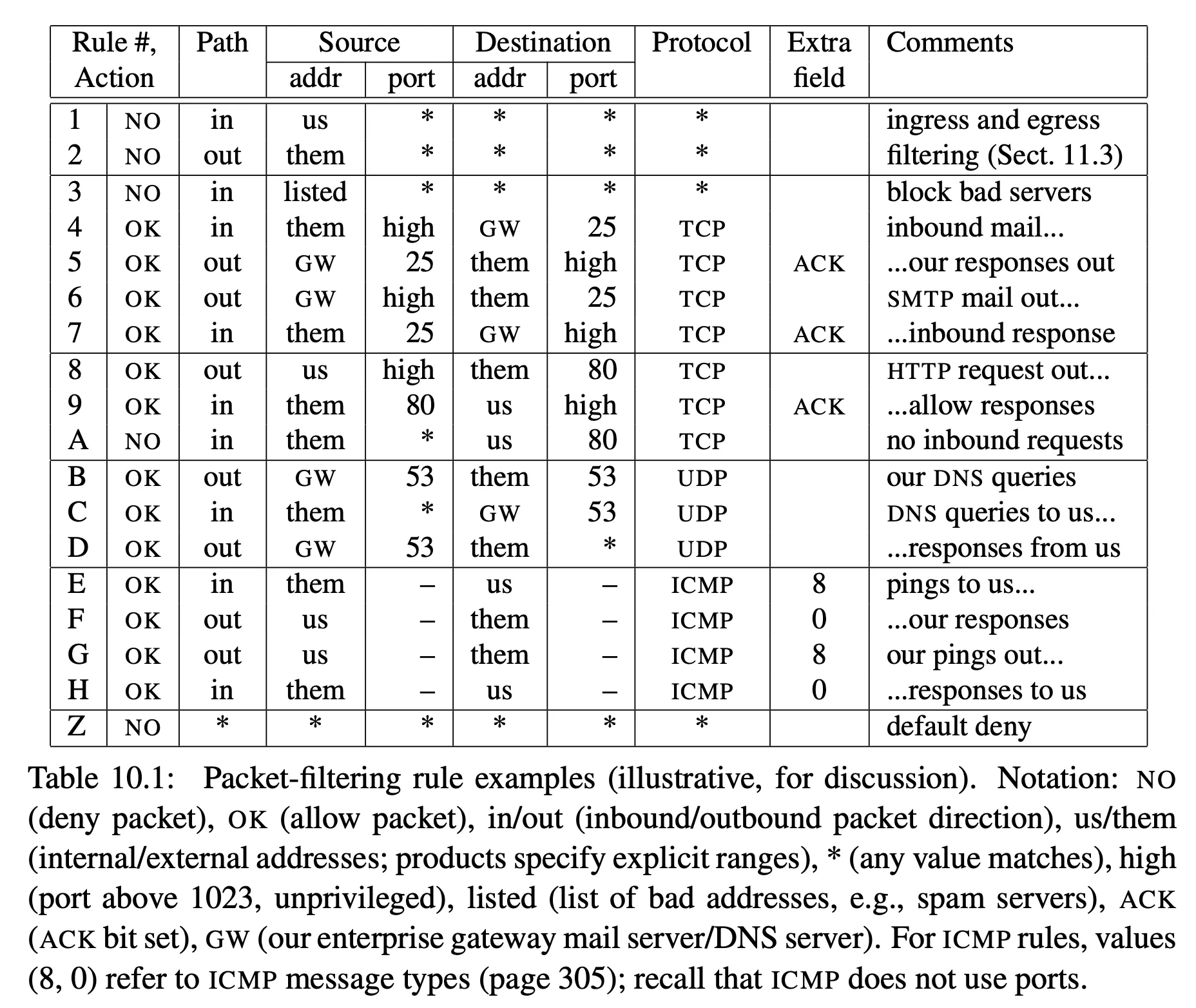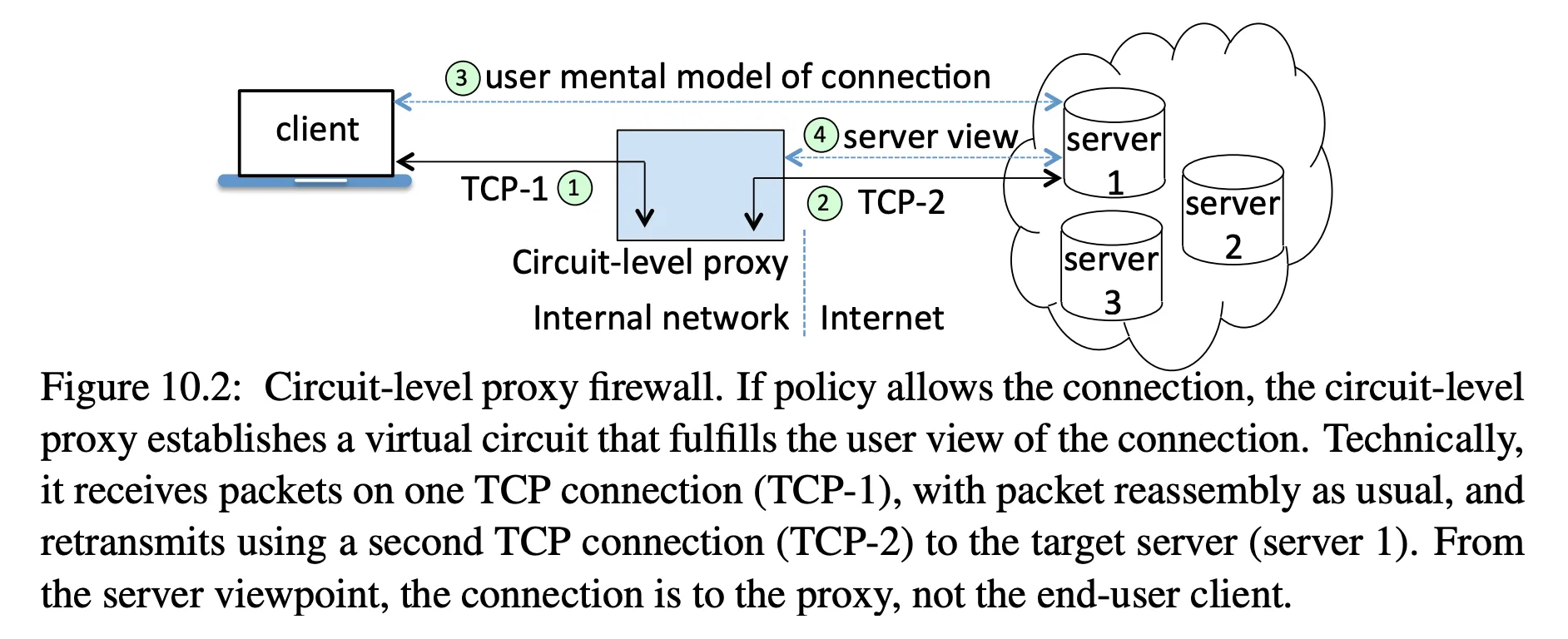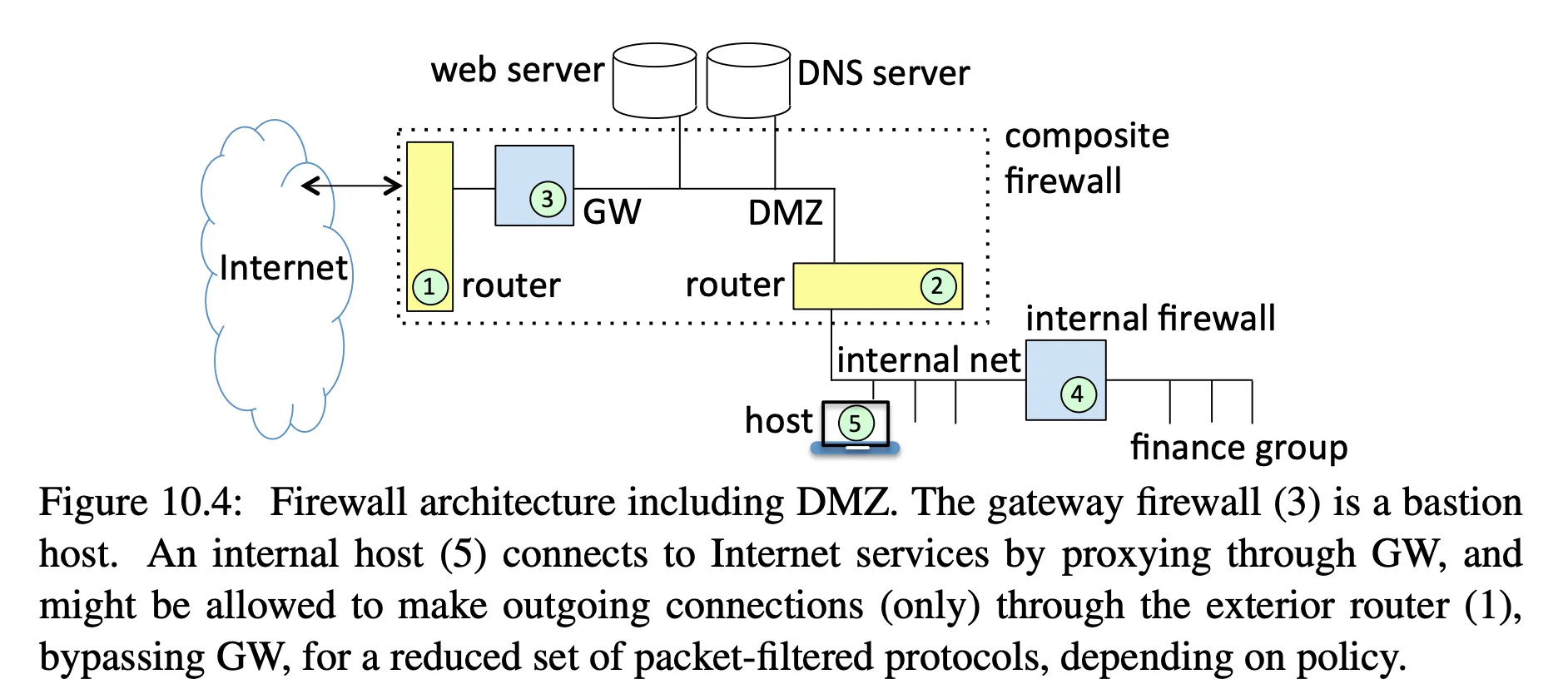Firewalls
Questions on the readings
The readings today are from Computer Security and the Internet, Chapter 10, sections 10.0 - 10.2.
Firewall basics
-
Defensive technology
-
Designed to screen out incoming traffic at the perimeter of an organization’s network and also authorize outbound traffic
- but also can be on individual machines
-
note an organization may want to inspect outgoing traffic to ensure sensitive data isn’t exfiltrated

- basic idea is that by default, no traffic comes in unless explicitly authorized
- outgoing traffic is allowed, along with any return traffic on the same connection
Packet-filter firewall
-
inspects individual packets using rules
- often a “match first rule” system
- actions are ACCEPT, DROP (no notice), REJECT (provide error), LOG
-
filter rules usually based on:
- source IP address
- source port
- destinaton IP address
- destination port
- protocol
-
may also use ICMP type and code
-
stateless filters vs stateful filters
- a stateless filter examines each packet independently
- a stateful filter can track TCP connection states, and thus treat packets belonging to an accepted TCP connection different from new connections

-
example rules:
- Rules 1-2 stop spoofed source IP addresses
- Rule 3 denies packets from a known spam server
- Rules 4-7 are for mail traffic — allow incoming connections to a mail server (port 25) and responses, outgoing mail connections and responses
- Rules 8-A allow outbound HTTP onnection requests, inbound responses, but reject inbound HTTP connection requests
- Rules B-D are for DNS traffic — outgoing queries, incoming queries and responsees
- Rules E-H allow incoming and outgoing pings
- Rule Z is to deny traffic by default when no other rules match
-
limitations of firewalls
- assumes a true perimeter exists — now we have personal devices, USB drives, phones making the network defense more complicated
- vulnerable to malicious insiders
- trusted users may make bad connections
- can be transited with tunnelling (e.g. a VPN)
- can’t screen encrypted content
Proxy firewalls
- circuit-level proxy firewalls: relay an entire connection, either allow or deny, and then relay bytes

-
circuit-level proxy firewall
- uses a socket daemon, sockd, on the firewall, and the SOCKS protocol to communicate
- user --- sockd --- Internet site
- separate TCP connections!
- application -> intercepted by SOCKS library -> SOCKS protocol to sockd -> internet
- connection is allowed or disallowed
-
application-level proxy firewalls: relay application-specific traffic

- application-level proxy firewall
- able to inspect contents of packets since they have knowledge of the protocol
- can remove malicious JavaScript, emails, etc.
Enterprise firewall architectures

- the firewall (3) is exposed to the hostile newtork, so it maybe called a bastion host
- the web server and DNS server are public-facing, so they sit on a network right after the firewall, in a demilitarized zone or DMZ
- there is a second internal firewall (4) that protects internal assets
- routers (1) and (2) provide connectivity
- provides defense in depth